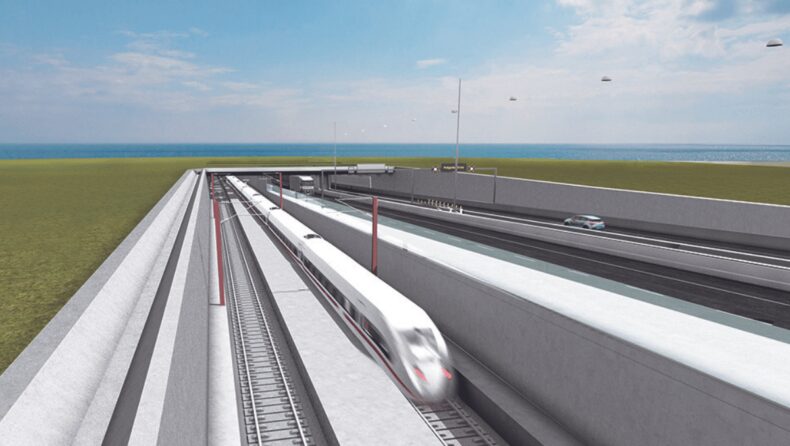Denmark and Germany will be connected via a tunnel that runs 40 metres beneath the Baltic Sea, shortening the distance between the two nations. It’ll debut in 2029
The longest immersed tunnel in the world will connect Germany and Denmark in 2029, reducing travel times between the two nations as it descends up to 40 metres beneath the Baltic Sea.
Construction of the Fehmarnbelt Tunnel began in 2020 after more than a decade of preparation, and in the months since, a temporary harbour has been finished on the Danish side.
It will serve as the location of the plant that will shortly construct the 89 enormous concrete sections that make up the tunnel.
Several further phases of the project are presently in progress with the completion of the construction of the temporary harbour on the Danish side. The tunnel will be divided into sections that are each 217 metres long, 42 metres broad, and nine metres high.
According to Henrik Vincentsen, CEO of Femern A/S, the state-owned Danish firm in charge of the project, “the anticipation is that the first manufacturing line will be ready towards the end of the year, or at the beginning of next year.” We must be prepared to submerge the first tunnel element by the first of 2024.
With a building expenditure of more than 7 billion euros ($7.1 billion), the tunnel, which will be 18 kilometres (11.1 miles) long, is one of the greatest infrastructural projects in Europe.
Comparatively, the 50-kilometer (31-mile) Channel Tunnel connecting England and France, which was finished in 1993, cost £12 billion ($13.6 billion) in current currency.
The Channel Tunnel was constructed using a boring machine rather than by submerging pre-built tunnel sections, although being longer than the Fehmarnbelt Tunnel.
It is intended to replace the current ferry service from Rdby and Puttgarden, which ferries millions of people each year across the Fehmarn Belt, a strait between the Danish Island of Lolland and the German island of Fehmarn.
The Fehmarnbelt Fixed Link, as the tunnel’s official name is, will be the world’s longest combined road and rail tunnel. There will be two electrified rail tracks, two double-lane roads, and a service tunnel between them.
According to Jens Ole Kaslund, technical director at Femern A/S, the state-owned Danish firm in charge of the project, a rail ride from Copenhagen to Hamburg today would take about four and a half hours. “The same trip will take two and a half hours when the tunnel is finished.
The tunnel construction project began in 2008 when Germany and Denmark agreed to build it. The passage of the requisite legislation by both nations and the completion of geotechnical and environmental impact studies, however, took more than ten years.
While the procedure went without a hitch on the Danish side, a number of parties, including ferry companies, environmentalists, and local governments, appealed against the project’s approval due to allegations of unfair competition or noise and environmental concerns.
A German federal court dismissed the objections in November 2020 “The judgement came with a series of requirements regarding how we monitor the environment while we are building, including things like noise and sediment discharge. We kind of expected this and were prepared for it. I really believe that we must do everything in our power to minimise our influence on the environment,” Vincentsen says.
Several other project phases, including the drilling of the actual trench that will host the tunnel and the construction of the factory that will build the tunnel sections, are under way now that the temporary harbour on the Danish site has been completed.
Each segment will be 217 metres long, 42 metres broad, and 9 metres tall, or about half the length of the largest container ship in the world. They will each weigh 73,000 metric tons, which is equivalent to more than 13,000 elephants.
Six production lines will be used, and the first of the factory’s three halls is currently 95% complete, according to Vincentsen.
The construction project, which has been hampered by the issues with the global supply chain, will employ up to 2,500 people directly.
Read More: Dubai Hindu temple inaugurated, open for people of all faiths from October 5













